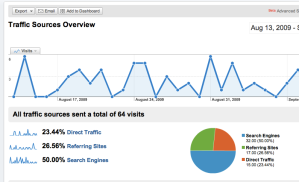Websites are Real Estate
As I’ve said before (and I’ll likely say again) websites are probably some of the most valuable real estate that libraries have. It is an intro point and main area of engagement for many many patrons. In the case of academic libraries it may even be the only point of engagement.  Why is it, then, that the amount of effort that goes into planning and developing websites is often less than buildings? When a building is going up, you know there will be management involvement. It is guaranteed that they will hire an outside consultant. The process takes years and lots and lots of time.
Why is it, then, that the amount of effort that goes into planning and developing websites is often less than buildings? When a building is going up, you know there will be management involvement. It is guaranteed that they will hire an outside consultant. The process takes years and lots and lots of time.
Granted, buildings are around a lot longer than websites, still a prime point of access for patrons should involve constant attention. The beauty part of websites is that there are so many tools that can help us analyze, understand, and test what works for patrons. Imagine if you could build a new library and then slide around the bathrooms or computer areas to find out what best works for patrons as if we were in some type of library Hogwarts. That would be pretty sweet.
So without further adieu, here’s a quick guide to web analytics for libraries.
Gathering Information and Understanding Visitors
The easiest and quickest way to begin analyzing a webpage is with Google Analytics. Do you have access to you pages html code? Can you copy and paste? Great, than you can begin to analyze visitors. With google analytics, you can paste a small piece of JavaScript into each page and it will gather information on visitors, where they are from, how long they stay, and so on.
Here’s a view of traffic sources at the limnology library.
There are, of course, plenty of other analytics options out there. Many of them are free. This is just the one that I am most comfortable with. And it will have most of what a library needs to begin analyzing their website.
Bounce Rate and Conversion. A quick look at site efficiency
So there are plenty of different stats out there, but we’ll look quickly at a couple of the most revealing; Bounce Rate and Site Conversion.
The bounce rate is essentially the page from which users leave. This, of course, is not good. This means we’ve lost patrons. They aren’t engaging our site anymore and, in the worst case, left without the information they wanted in the first place.
The prime cause of bounce rates, according to analytics guru and Google’s analytics evangelist Avinash Kaushik, is a disconnect between customer intent and webpage purpose. So pages with a high bounce rate mean the patron came expecting to find something and left because they could not find/do what they intended.
 Our goal in optimizing our web site is to align our webpage purpose with customer intent (of course figuring that out is hard).
Our goal in optimizing our web site is to align our webpage purpose with customer intent (of course figuring that out is hard).
 The more we can align, the better our webpage. An overlap like this is good, but can be made better.
The more we can align, the better our webpage. An overlap like this is good, but can be made better.
How Do We Lower Bounce Rate: A Solution
So how can we make that match? Well, here’s a quick and dirty solution proposed by Galen DeYoung of Search Engine Land.
In short, we find the keywords patrons use to land on our site, and multiply the bounce rate of each keyword with the number of visits using that word. This will give us a list in order of importance of what users expect.
Here’s an example from the (admittedly low traffic limnology library). Click to the larger image shows that, not surprisingly, ‘limnology library’ does not bounce while ‘thesis binding’ has a high bounce rate. This suggests that I should make information about thesis binding more prevalent and easy to use.
Galen suggests that on top landing pages we can use the keyword information to make a targeted piece of information available to encourage users to stay and click through to another page.
What’s Next
Of course, gathering statistics is only so helpful. It is necessary to turn these statistics into actions. Next week I’ll talk a little more about turning stats into change through web optimization.
Comments, Suggestions?
So, did I leave anything out? Does your library have an analytics program? How does it work? Drop a line in the comments or hit me on twitter @joesmorgan.
See you next week.



1 comment
Comments feed for this article
October 3, 2009 at 4:48 pm
A Brief Intro to Web Analytics and Web Optimization for Libraries Pt 3: Social Media « NeoLib
[…] happen through third pary systems (for example, through twitter or facebook) so measurements like bounce rate and conversion don’t make as much sense (nor are they really […]